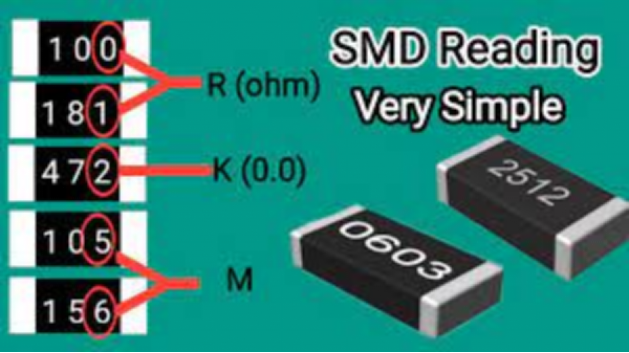Understanding Values, Testing, and Practical(1)
SMD Resistor Decoding: Understanding Values, Testing, and Practical Techniques
In the world of electronics, SMD resistors, or surface mount resistors, play a crucial role. These tiny components provide precise resistance values and are extensively used in various electronic circuits. To fully comprehend their significance, it is important to understand the coding system, resistance values, testing techniques, and practical applications associated with SMD resistors.

One aspect to consider is the coding system used for SMD resistors, such as "codigo resistor smd" or "codigo de resistores smd." This system employs specific codes to identify and select the appropriate resistors. For instance, a 2.2 k ohm resistor is denoted as such, while a 33 ohm resistor carries its own unique code. Additionally, an SMD resistor with the code "smd 472" has its own distinct identification.
Resistor values come in a wide range, including the 1r10 resistor and the resistor smd 473. These values indicate the resistance offered by the resistor. For instance, a resistor labeled as 1r10 has a resistance of 1.10 ohms, while the smd 473 resistor represents a specific resistance value associated with the code "473." Furthermore, a resistor with the code "resistor 1206 datasheet" adheres to specific industry standards and has a defined resistance value.
To ensure the functionality of SMD resistors, proper testing methods are essential. One technique, "como testar resistor smd com multimetro digital," guides engineers on how to test SMD resistors using a digital multimeter. This method enables precise measurements and aids in identifying any potential issues.
In practical applications, SMD resistors serve various purposes. For example, the PM240 2 braking resistor is specifically designed for braking systems, providing efficient control and dissipation of electrical energy. SMD code resistors are widely used in circuit design, ensuring accurate resistance values within the specified coding standards. On the other hand, the smd 0 ohm resistor acts as a jumper, connecting circuit paths without adding resistance.
In terms of resistance values, the 2r4 resistor and the 47r0 smd resistor value demonstrate the diversity available. The 2r4 resistor has a resistance of 2.4 ohms, while the 47r0 smd resistor carries a resistance value of 47 ohms. Additionally, the 900 ohm resistor smd offers yet another option for specific resistance requirements.
Other resistor variations include the resistor 331 and the 9r10 resistor, each catering to unique circuit demands. Furthermore, understanding how to test and measure SMD resistors, as mentioned in phrases like "como testar um resistor smd" and "como medir resistor smd com multimetro digital," is crucial for troubleshooting and ensuring accurate readings.
When it comes to practical implementation, the 1k smd resistor, along with the 1206 resistor footprint, offers versatility in circuit board design. These components are widely used due to their compact size and reliable performance. Additionally, the resistor de 47k represents a resistor with a resistance value of 47 kilohms, fulfilling specific circuit requirements. Similarly, the 01r resistor value signifies a resistor with a resistance of 0.1 ohms, catering to low resistance applications.
In conclusion, SMD resistors play a vital role in modern electronics, providing precise resistance values and efficient circuit control. Understanding the coding system, resistance values, testing techniques, and practical applications is crucial for successful circuit design, troubleshooting, and component selection. Whether it's a 2.2 k ohm resistor, a resistor smd 472, or a resistor 331, these tiny components